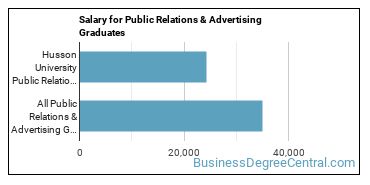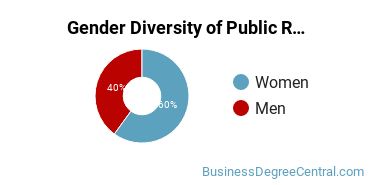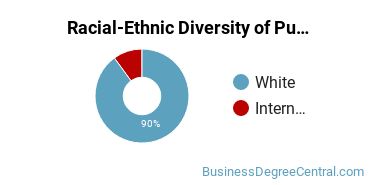Public Relations & Advertising at Husson University
Husson is located in Bangor, Maine and approximately 3,473 students attend the school each year. In the 2020-2021 academic year, 11 students received a bachelor's degree in public relations from Husson.
Want to know more about the career opportunities in this field? Check out the Careers in Public Relations & Advertising section at the bottom of this page.
Featured schools near , edit
Husson Public Relations & Advertising Degrees Available
- Bachelor’s Degree in Public Relations
Husson Public Relations & Advertising Rankings
Each year, College Factual ranks public relations programs across the country. The following shows how Husson performed in these rankings.
Note: While rankings may be a good starting point when you're researching a school, they don't necessarily highlight all of a school's strengths. Don't forget to check out the other details that are available for a school to see if it has what you're looking for in a program.
Bachelor’s Degree Overall Quality & Other Notable Rankings
The public relations major at Husson is not ranked on College Factual’s Best Colleges and Universities for Public Relations & Advertising. This could be for a number of reasons, such as not having enough data on the major or school to make an accurate assessment of its quality.
| Ranking Type | Rank |
|---|---|
| 185 | |
| 207 |
How Much Do Public Relations Graduates from Husson Make?
The median salary of public relations students who receive their bachelor's degree at Husson is $33,238. Unfortunately, this is lower than the national average of $36,826 for all public relations students.

Public Relations Student Demographics at Husson
Take a look at the following statistics related to the make-up of the public relations majors at Husson University.
Husson Public Relations & Advertising Bachelor’s Program

About 91% of those who receive a bachelor's degree in public relations at Husson are white. This is above average for this degree on the nationwide level.
The following table and chart show the race/ethnicity for students who recently graduated from Husson University with a bachelor's in public relations.

| Race/Ethnicity | Number of Students |
|---|---|
| Asian | 0 |
| Black or African American | 0 |
| Hispanic or Latino | 0 |
| White | 10 |
| International Students | 0 |
| Other Races/Ethnicities | 1 |
Husson also has a doctoral program available in public relations. In 2021, 0 student graduated with a doctor's degree in this field.
Concentrations Within Public Relations & Advertising
If you plan to be a public relations major, you may want to focus your studies on one of the following concentrations. The table shows all degrees awarded in this field awarded for all degree levels at Husson University. A concentration may not be available for your level.
| Concentration | Annual Degrees Awarded |
|---|---|
| Sports Communication | 8 |
| Public Relations, Advertising, & Applied Communication | 3 |
Careers That Public Relations Grads May Go Into
A degree in public relations can lead to the following careers. Since job numbers and average salaries can vary by geographic location, we have only included the numbers for ME, the home state for Husson University.
| Occupation | Jobs in ME | Average Salary in ME |
|---|---|---|
| Public Relations Specialists | 1,390 | $57,510 |
| Public Relations and Fundraising Managers | 540 | $88,940 |
| Editors | 360 | $50,650 |
| Reporters and Correspondents | 260 | $42,650 |
| Radio and Television Announcers | 220 | $36,810 |
References
*The racial-ethnic minorities count is calculated by taking the total number of students and subtracting white students, international students, and students whose race/ethnicity was unknown. This number is then divided by the total number of students at the school to obtain the racial-ethnic minorities percentage.
More about our data sources and methodologies.
Featured Schools
You have goals. Southern New Hampshire University can help you get there. Whether you need a bachelor's degree to get into a career or want a master's degree to move up in your current career, SNHU has an online program for you. Find your degree from over 200 online programs.
Visit School
